10 Best Low Light Binoculars of 2024 – Reviews & Top Picks
Last Updated on
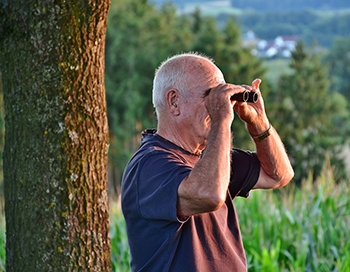
Choosing a pair of low light binoculars these days can be a challenge. As lens technology improves and the cost of making the lenses comes down, we are seeing more and more brands offering higher quality optics. Many brands are now offering low-light and even night vision binoculars at very affordable prices.
Sorting through the vast jungle of low-light binoculars can seem overwhelming. Understandably, there might be a temptation to pick the first model you see, but we can help you get a great one. We review binoculars of all types any chance we get, and we’ve chosen ten designed for low-light viewing to discuss with you.
These reviews, combined with the buyer’s guide, will help you learn what’s essential with low light binoculars. The more knowledge you have, the more confident you will feel when you make your decision. Continue reading for our in-depth reviews of each brand of binoculars, where we compare all the factors that will help you make a wise purchase.
A Quick Comparison of Our Favorites:
| Image | Product | Details | ||
|---|---|---|---|---|
| Best Overall |
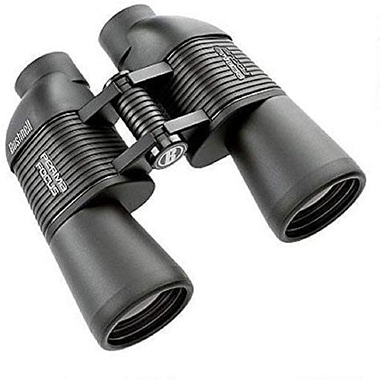 |
Bushnell PermaFocus Binocular |
|
CHECK PRICE |
| Best Value |
 |
Celestron SkyMaster Binoculars |
|
CHECK PRICE |
| Premium Choice |
 |
Vortex Optics Razor HD Binoculars |
|
CHECK PRICE |
 |
Sallous 10 x 25 Compact Low-Light Binoculars |
|
CHECK PRICE | |
 |
Occer Low Light Binoculars |
|
CHECK PRICE |
Let’s consider the ten models of low light binoculars we have reviewed.
The 10 Best Low Light Binoculars – 2024 Reviews
1. Bushnell PermaFocus Binocular – Best Overall

The Bushnell BSH175010-BRK PermaFocus Binocular is our choice for the best overall low light binoculars. These heavy-duty binoculars deliver a wide field of view and feature a unique design that never needs focusing. 50-mm objective lenses help provide a bright image in low light conditions, and they are very durable and have a non-slip rubber armor for increased protection and control.
While we reviewed these binoculars, we found them easy to use, and the no-focus works well at distances further than 50 feet. The primary downside to this model is that they are heavy, and carrying them long distances is tiring.
- Wide field of view
- 50-mm objective lens
- Focus free
- Non-slip rubber armor
- Heavy
2. Celestron SkyMaster Binoculars – Best Value
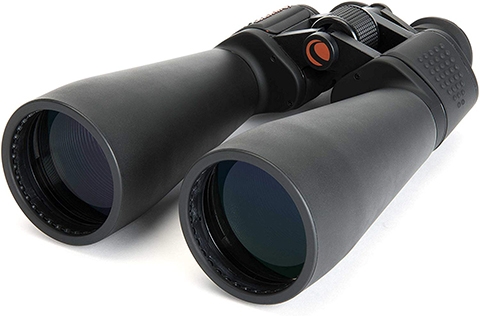
The Celestron 71008 SkyMaster Binoculars are our choice for the best value. These powerful binoculars feature 70-mm objective lenses for an abundance of light, and the 25X magnification will bring in faraway objects.
During our review of these binoculars, we noticed that they work well in low light and even work well for looking at the sky. They are very heavy, though, and will require the use of a tripod if you intend to use them for more than a few minutes. The tripod will also help stabilize the binoculars and make it easier to use the extremely sensitive focus wheel. Given the specs at this price point, these are the best low light binoculars for the money.
- 25X magnification
- 70-mm objective lens
- Very heavy
- Sensitive focus wheel
3. Vortex Optics Razor HD Binoculars – Premium Choice

The Vortex RZB-2103 Optics Razor HD Binoculars are our premium choice low light binoculars. These binoculars are quite expensive, but they are also professional quality binoculars you can trust. They feature 50-mm objective lenses that are multicoated to gather the lightest possible while reducing glare and sharpening the image. The magnesium chassis is lightweight, extremely durable, and waterproof. It also features multi-position eyecups for using the binoculars with or without glasses.
The downside to these binoculars is their very high cost is two to three times as much as some of the other models on this list. Also, the field of view is not as wide as some of the others.
- 50-mm objective lens
- Lightweight magnesium chassis
- Multi-position eyecups
- Waterproof
- Expensive
- A small field of view
4. Sallous 10 x 25 Compact Low-Light Binoculars
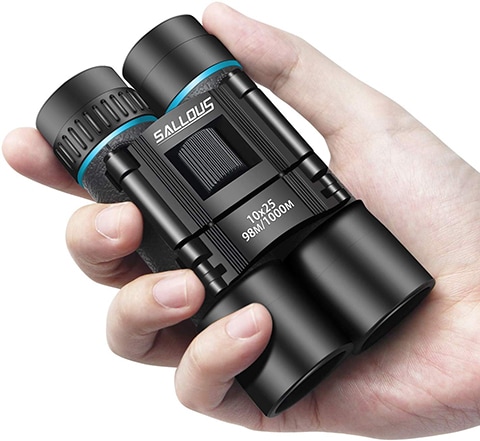
The Sallous 10 x 25 Small Compact Binoculars are an ultra-compact style of binoculars. This model is small enough to fit into your pocket, and it weighs less than a pound. The rubber coating will protect it from scratches and act as a shock absorber if you accidentally drop it.
We feel that these would make great opera glasses and be perfect for concerts and sporting events. The image is clear, but small 25-mm objective lenses will not gather much light, and the 10X zoom is a little low. We also found it hard to adjust and bumped it on our eyes while using it because there is very little eye relief.
- Rubber armor
- Small
- Lightweight
- 25-mm objective lens
- No eye relief
- Hard to adjust
5. Occer 888635 Low Light Binoculars

The Occer 888635 Compact Binoculars are another pair of travel-sized binoculars on our list. These compact binoculars are lightweight and water-resistant. They also feature a rubber armor for superior gripping and protection.
While we used them, we thought they did a pretty good job during the day but suffered at night. The 25-mm objective lenses are too small to let enough light in for a clear night image. We found them hard to focus, and it requires two separate steps to make a blurry object clear. These were also prone to fogging, bringing their water-resistance into question.
- Lightweight
- Water-resistant
- Rubber armor
- 25-mm objective lens
- Fog easily
- Hard to focus
6. Aurosports Folding High Powered Binoculars
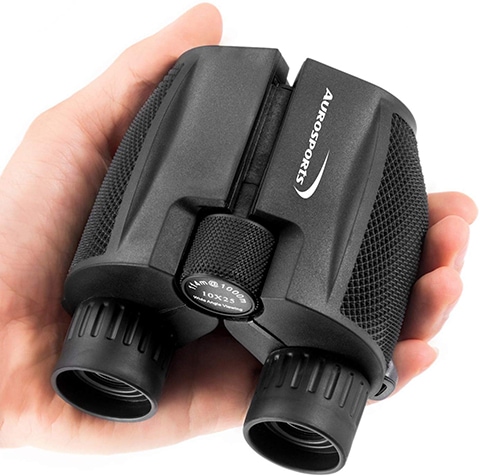
The Aurosports 4336304350 Folding High Powered Binoculars are compact sized binoculars that are perfect for children. These tiny, lightweight binoculars feature a wide field of view and 10X magnification. They’re waterproof and feature a durable chassis with rubber armor.
In our experience, they produced a clear image in the center of the lens, but it would blur around the edges. The 25-mm objective lens is too small to collect much light, so you need to look at something well lit to use these at night. We also found them a little hard to focus at times.
- Small size
- Lightweight
- Wide field of view
- Waterproof
- 25-mm objective lens
- Blurry edge
- Hard to focus
7. LTTWSF 12×50 Low-Light Binoculars
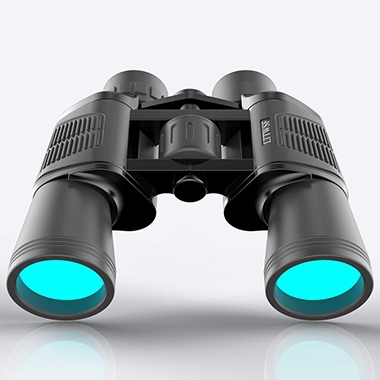
The LTTWSF 12×50 Binoculars are a powerful set of binoculars that feature large 50-mm objective lenses at a bargain price. These binoculars feature a very smooth focus mechanism and are neither too heavy nor too lightweight.
While we used these binoculars, we found that they produce a clear image up to about 70 yards even in low light situations. After about 70 yards, the image would begin to get blurry, and we suspect improper lens alignment. Quality control was also suspect with this model because several pieces seemed to be loose, including the eye pad.
- 50-mm objective lens
- Low cost
- Smooth focus
- Improperly aligned optics
- Poor quality construction
8. Adorrgon Lightweight Binoculars

The Adorrgon 889268 Lightweight Binoculars are a broader style of binocular that features a 42-mm objective lens. These binoculars are lightweight and waterproof and have a wide field of view.
While we were able to get a usable image at night, we would have liked it if the objective lenses were a little bigger. There was also an issue with the 12X zoom because it looked a lot more like a 10X zoom to our eyes. It was also a little larger than you might expect and somewhat cumbersome.
- Waterproof
- Lightweight
- Large
- 10X zoom
9. Binoteck 43551-137722 Binoculars
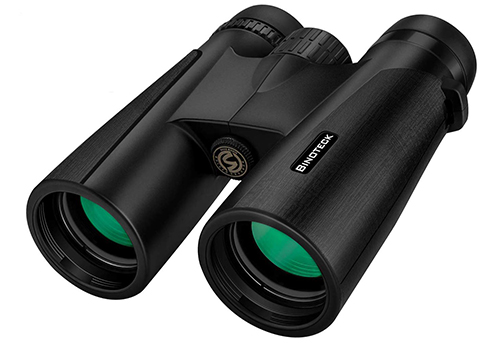
The Binoteck 43551-137722 Binoculars are for low light bird watching and concert-going. These binoculars feature 42-mm objective lenses and come with an included phone adapter for attaching your phone to take pictures and movies. It’s waterproof and features durable shockproof construction.
The downside to this brand was its flimsy tripod connection that breaks easily and requires extreme care when connecting the binoculars. It was difficult to use these binoculars with glasses, and it was hard to turn the focus knob. The smartphone adapter is a nice touch, but it wouldn’t work with some of the popular phone brands we tried. It didn’t hold the phone firm, often leading to blurry pictures.
- Durable
- Smartphone adapter
- Waterproof
- Flimsy tripod attachment
- Uncomfortable to use with glasses
- Hard to turn the focus knob
- Phone adapter doesn’t fit all phones
10. LAUKIYE Lightweight Binoculars
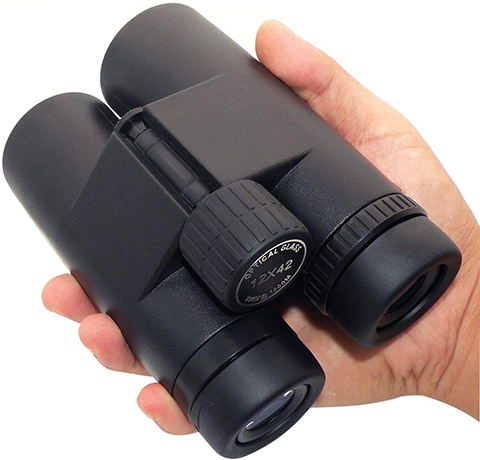
The LAUKIYE BC-001 Lightweight Binoculars are the last low light binoculars on our list. This standard-sized pair of binoculars is very lightweight and features 12X capability. We found them to produce a clear image, but their 42-mm objective lens is a little too small for night viewing. We could get a good picture during a full moon or at a baseball game, but otherwise, they didn’t work well at night.
We also thought the field of view was a little narrow on this model, and they had a cheap feel overall. There is no shock absorbing rubber coating.
- Lightweight
- Narrow field of view
- Cheap feel
- Flimsy lens covers
Buyer’s Guide
Let’s look at the different aspects of the low light binoculars to understand what’s vital for them to operate correctly and why they are different from ordinary binoculars.
Low Light versus Night Vision
The first thing you need to understand is the difference between low-light binoculars and night vision binoculars.
Low Light
Low-light binoculars use lenses and mirrors to make the most of any ambient light available. These devices do not require any power, and they will not work when there is no light. They are simple devices that have been around for a long time, and they work best during the full moon.
Night Vision
Night vision binoculars will also make use of low-light technology, but these often employ more advanced technology as well. Typically these devices use internal amplifiers to magnify the ambient light electronically. They can also use an infrared “torch” to flood an area with invisible light that the optics can then view. They may also have access to thermal imaging scanners that can pick up heat signatures.
Night vision devices can operate in complete darkness and are many times more complicated and expensive than their low-light counterparts. Night vision also requires power, usually in the form of bulky batteries.
Objective lens
The objective lens is the most critical component of low light binoculars. There are objective lenses in standard binoculars as well, but during the day, we look to the objective lens to provide field-of-view. In low light situations, we look more at the lenses light gathering properties.
The objective lens is the lens furthest from your eye. This lens is responsible for collecting light from the environment to present a brighter image to the user. Larger lenses will gather more light and will provide a full field of view.
We highly recommend an objective lens that is at least 50-mm wide for night viewing. Any lens smaller than 50-mm will have a difficult time collecting enough light for a clear image after sundown.
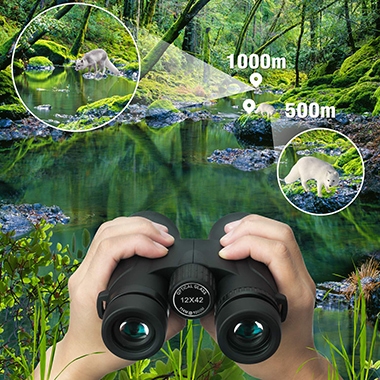
Field of View
Your field-of-view is how much of the landscape you can see when looking through your binoculars. The objective lens plays a big part in your field-of-view, but the other lenses that are built in your binoculars are also critical. These lenses will have special coatings applied to them that will help reduce reflections and allow for a clearer image. A wider field-of-view is better.
Weight
It may not seem like it before purchase, but the weight of your binoculars is critical. You may need to carry these around for long periods, and they can add a lot of strain to your neck if they are too heavy.
Eye relief
Eye relief is how close your eye needs be to the eyepiece to see a clear image. We recommend looking for eye relief of at least 10 millimeters, especially if you have glasses, but the more, the better.
Magnification
More magnification will make objects appear closer. Low-light binoculars don’t typically have very high magnification, but you can usually find them with magnifications between 7X and 25X. Higher magnification results in a smaller exit pupil. Exit pupil is the size of the image that hits your eye, and the smaller it is, the harder it will be to see at night.
Phone Adapter
Many low light binoculars are for use with tripods. These binoculars often include a handy phone adapter that will hold the phone’s camera lens over one of the eyepieces so you can take pictures or movies.
Conclusion
Thanks for reading our low-light binocular reviews and buyer’s guide. Hopefully, you are now confident enough to make a purchase. The best overall low-light binocular is the Bushnell PermaFocus Binocular that features a large 50-mm objective lens for focus-free viewing. The Celestron 71008 SkyMaster Binoculars are our best value binoculars, and these provide the largest objective lens at the lowest price, but they have a few quirks. Either choice is perfect for the beginner or as replacement binoculars.
Featured Image: RitaE, Pixabay
Table of Contents
- A Quick Comparison of Our Favorites:
- The 10 Best Low Light Binoculars – 2024 Reviews
- 1. Bushnell PermaFocus Binocular – Best Overall
- 2. Celestron SkyMaster Binoculars – Best Value
- 3. Vortex Optics Razor HD Binoculars – Premium Choice
- 4. Sallous 10 x 25 Compact Low-Light Binoculars
- 5. Occer 888635 Low Light Binoculars
- 6. Aurosports Folding High Powered Binoculars
- 7. LTTWSF 12×50 Low-Light Binoculars
- 8. Adorrgon Lightweight Binoculars
- 9. Binoteck 43551-137722 Binoculars
- 10. LAUKIYE Lightweight Binoculars
- Buyer’s Guide
- Conclusion
About the Author Robert Sparks
Robert’s obsession with all things optical started early in life, when his optician father would bring home prototypes for Robert to play with. Nowadays, Robert is dedicated to helping others find the right optics for their needs. His hobbies include astronomy, astrophysics, and model building. Originally from Newark, NJ, he resides in Santa Fe, New Mexico, where the nighttime skies are filled with glittering stars.
Related Articles:
When Were Binoculars Invented? History, Today & Future
How to Choose Binoculars for Bird Watching: 10 Expert Tips
How to Collimate Binoculars: 9 Expert Tips
Binocular Magnification Chart: Numbers & Distances Compared
What Is the Best Binocular Magnification for Hunting? Optical Features Explained
Can You Use Binoculars to Look At Stars? How to Choose the Right Pair
What Does 20X50 Mean on Binoculars? Our Helpful Guide
10 Best Binoculars in Canada of 2024: Reviews & Top Picks



